Tag: workout
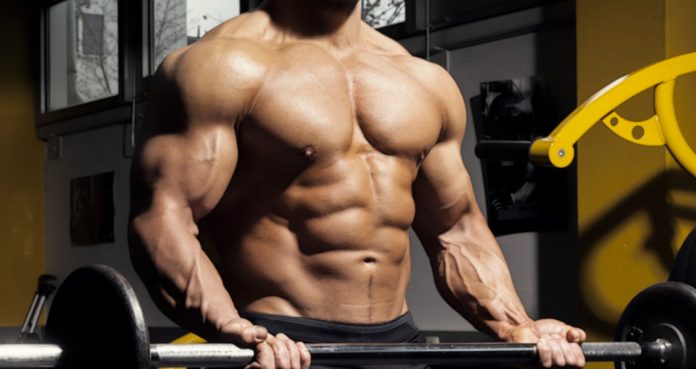
The Non-Stop Mass Building Method For Giant Size
Giant sets for giant gains.
Bodybuilding training isn’t a roller coaster of excitement. In fact, bodybuilding workouts can be completely boring, especially if you don’t have that drive for perfection. It’s one of the reasons why pro bodybuilders get so much damn respect. To train hard, day in and day out, utilizing practically the same movements over and over again can be tedious to say the least. No one said training was supposed to be an exciting experience.
Still, if you’re going to be spending your time trying to perfect and sculpt your body then you’re going to want some variations to your routine to keep things fresh. There’s nothing worse than letting things become stale, so a new program every now and then is beneficial to break up the monotony. For a true bodybuilder, the best way to make a training session more exhilarating is to ramp up the intensity..
This is where Giant Sets come in handy. Where a superset requires you to perform two exercises with no rest in between exercises and a triset requires you to perform three – a giant set ups the number to four ensuring that you’ll definitely get a pump out of the exercise. Like supersets and trisets, when performing a giant set you’re going to want to work the same muscle if not the entire muscle groups surrounding the area being worked on for the day. So if you are focusing on bicep development then you’re going to want to perform exercises that target the bicep itself or the antagonizing triceps muscle group.
Though giant sets are great for changing up your routine, it can be a bit of nightmare logistically. If your gym is filled to the brim with other avid lifters then you’re going to have a bit of a hard time trying to utilize all the machines needed for a the massive set. The idea is to pick the right opportunity to use this training method. The problem is once you perform giant sets and start seeing results you may not want to try any other program.
Back
Bent Over Barbell Row
3 sets, 8, 10, 12 reps
Lat Pull Down
3 sets, 12, 15, 20 reps
Dumbbell Row
3 sets, 8, 10, 12 reps
Pull Ups
3 sets, 10, 12, To Failure
Legs
Leg Extensions
3 sets, 12, 13, 15 reps
Leg Curl
3 sets, 12, 13, 15 reps
Stiff Legged Deadlift
3 sets, 8, 10, 12 reps
Squats
3 sets, 6, 8, 10 reps
Are giant sets apart of your routine? Let us know in the comments below and be sure to follow Generation Iron on Facebook and Twitter.
The GI Team is here to provide top news and original content for the new generation. The generation of bodybuilders who are pushing the sport to bigger and better places. Join The Movement. Become a part of Generation Iron!
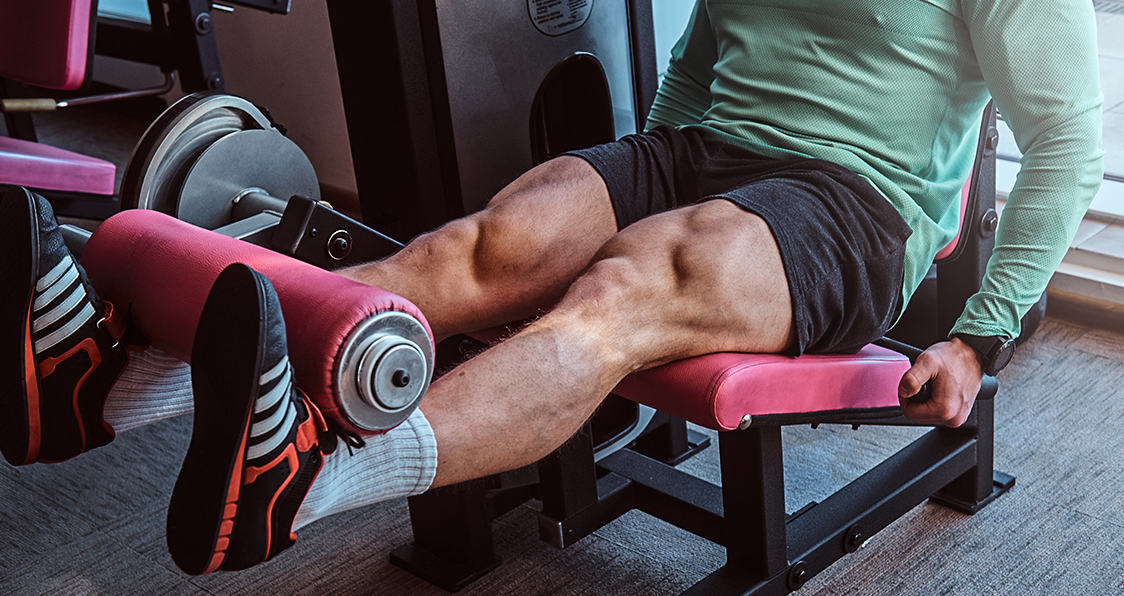
Let’s Revive This Forgotten Way of Building Monster Legs
Let’s Revive This Forgotten Way of Building Monster Legs
Remember when legs were everyone’s favorite muscle to train? We neither. Training legs, if done right, can be taxing. One big reason for exhaustion while hitting your wheels is that your legs are half of your body, and most of your blood and oxygen are pumped into them while training, leaving your brain and lungs running on fumes.
With the introduction of fancy training equipment like the seated hamstring curls, abductor, and adductor machines we have seen a big change in the leg workout routines. Make no mistake, we are not implying that people these days don’t have great legs.
Heck, pro bodybuilders on stage these days are arguably the freakiest since the advent of bodybuilding and we don’t mean this negatively. Most people attend bodybuilding shows to watch the freaks of nature in action and the guys on stage deliver on those expectations.
This article is not a comparison between the golden day and today’s bodybuilders. It’s aimed at pointing out the change in the leg training style over the years and to see if going back to the old ways can improve leg development.
Building Monster Legs The Old School Way
Our old-school quadzilla idol is none other than Tom Platz. If you’ve ever seen videos of Platz training legs, you’d realize it’s nothing like what we see in today’s YouTube leg training motivational videos.
Tom Platz’s leg workouts were so brutal that people attended his leg training sessions to learn his techniques and most people looked in awe when he got under the bar or sat on the leg-extension machine.
If you’ve ever watched the critically-acclaimed movie, Pumping Iron, how many bodybuilders did you spot using the abductor or hip-thrust machines? Could you complain about the wheels of any of the bodybuilders shown in the documentary?
Going Old School – Higher Reps
Coming back to Tom Platz. One of Tom’s biggest pieces of advice is, “the quads need higher reps than other muscle groups, like 15-20 or more to grow.” When was the last time you performed 15-20 reps of something while training legs?
These day’s we see a complicated system where people use a percentage of 1RM to determine how much weight they’d be lifting in a set. Don’t get us started on how to calculate a one-rep-max.
Most people deliberately underperform on a 1RM to set the bar low so that they can post fancy numbers on social media. Calculating 1RM can be complicated, and if you don’t want to open an excel sheet or a graph chart, you’d be better off doing what Platz did, perform higher reps.
Benefits of Higher Reps
Some people think that higher reps translate to lighter weights. This isn’t exactly true. Many lifters on a gaining program think that lifting light for higher reps is for people on a ‘cutting’ schedule.
On the contrary, lifters on a shredding routine think that lifting heavy for a lesser number of reps will make them bulky. Both these approaches are as far away from the truth as they can be.
Time under tensions (TuT) is one of the most important factors in adding muscle mass as it leads to the breaking of muscle fibers while training. With proper rest and diet, these broken muscle cells grow out to be bigger and stronger. The shorter your sets are, the lesser will be the tension on your muscle fibers.
Lifting Heavy is IN!
In today’s internet age, squatting 405lbs for 2 reps is way sexier than lifting 225lbs for 20 reps. Don’t believe us? Open your Instagram and look for an internet fitness celebrity who lifts moderate weights for higher reps.
Most of the content creators these days are chasing strength while undermining the importance of endurance. It maybe has something to do with the “go heavy or go home” mindset, which has its place but kills the benefits of time under tension.
Lifting super-heavy is undoubtedly hard but bearing the pain of high-rep quad exercises is not for the weak-hearted. 20 repetitions of squats will introduce you to soul-grinding, hypertrophy-inducing pain.
The Golden Age Leg Building Technique
Enough with the chatter, let’s get down to the business of building monster legs. Although we have spoken a lot about squats in this article, leg press, hack squat, leg extensions, and leg curls machines are great leg-building tools.
Quad Focussing Leg Press Workout:
1. Place your feet close to the bottom of the sled. Use a close-feet stance and push mainly through your toes rather than your heels to focus on your quads and limit the involvement of the hamstrings.
2. Close your eyes, shut your mind and go for 25 reps. Make sure you follow a full range of motion. Partial reps are going to do you no good. If you fail at around 15-20 reps, lighten the load and complete 30 reps. Getting the weights right for 25 reps is going to take 2-3 trial runs.
3. Perform three sets of these “sissy” sets. But it doesn’t end here. Put on some plates on the sled and do one final set of 8-10 reps. We’re here to get the best of both worlds, remember?
You can follow this same technique for all your leg exercises like squats, leg curls, extensions, and hack squats.
Leave Your Brains at Home Technique
There is another Tom Platz technique for building monster legs that are hidden away since the Instagram fitness models took over – the ten-minute sets. Tom Platz once put 225lbs on the bar and performed squats for 10 minutes straight – without stopping.
Before you lose your shit, we’ll be the first to admit that this technique needs some tweaking. How about we turn the ten-minute sets into two-minute sets? We knew you’d like that.
P.S – you don’t have to stick with the lighter weights for higher reps philosophy. You are free to test your mettle by squatting heavier weights for higher reps.
P.S.S – by higher reps, we mean up to 50 reps.
P.S.S.S – maybe it’s time to change the conversation from “how much can you squat?” to “for how long can you squat?”
For how long can you squat, bro? Let us know in the comments below. Also, be sure to follow Generation Iron on Facebook and Twitter.
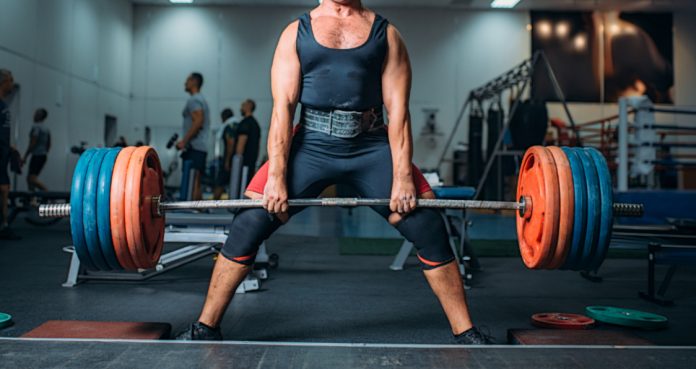
Top 6 Deadlifting Mistakes You Might Still Be Making
A change in bad habits leads to a change in life.
The deadlift is one hell of a monster workout. And as simple as it may look in theory, it is much more complex in practice. So how does a seemingly simple exercise leave so much leeway to do it incorrectly? Well, you’ve got to remember there’s a lot of moving parts. This exercise takes strength, coordination, and explosiveness, not to mention moving your bodies in ways that aren’t completely intuitive.
What many people forget is that the deadlift is a FULL body exercise. It’s not just engaging your legs but everything from your feet, to your core, to your shoulders. Many trusted fitness advisers have repeatedly said if they had to choose anyone exercise to do for the rest of their lives it would be the deadlift.
With all that movement it’s no wonder this exercise is so commonly performed incorrectly. This could lead to wasted gains and, even worse, injuries that keep you out of the gym. So let’s put the problems to rest with these top 6 deadlifting mistakes that you might making without even realizing it.
6. Rounding your back
This is by far the most common mistake we’ve seen by newbies and even some higher level lifters if they’re getting lazy. You don’t want to round your back or overcompensate by arching either. You want a flat back from the back of your head to your caboose. Instead of looking at the bar or at the ceiling try picking a spot a few feet in front of the bar and focusing on that throughout the lift.
5. Jerking your deadlifts
A lot of times guys get a hard on with deadlifts. They see all that weight and their emotions start to rise. They want to tackle it like Jenny Spinelli on prom night. While we’re all about getting in touch with your primal side, we’re going to recommend a controlled craziness on this one. Though you do push massive weight – this is actually a controlled exercise best performed with the arms locked. Try to keep everything tight and think of slowly pushing the floor away. Remember it’s a full body exercise, your arms are used as a lever.
4. Turning your dead into a squat
Of course, we’re not talking literally – but a common mistake with intermediates and even some experienced guys, leaning back too far on the bar will turn your deadlift into a squat. To remedy this raise your hips so your shoulders are over the bar. Keep the bar over your mid-foot with back straight. You can make adjustments according to your limbs but it’s pretty hard to screw it up from here.
3. Leaning back at the top
When you lean back at the top of a rep it squeezes the disk in your lower back which can possibly result in injury like a herniated disc. Stop when you knees and hips are locked, nothing more, nothing less. Sure pro powerlifters might do it but this is to show judges they’ve locked out. Some UFC fighters also fight with their hands down but I wouldn’t recommend that either.
2. Shin crushing
Do you dread the deadlift not because of the weight but because of the pain of the iron crashing into your shins at the beginning of each rep? Well stop it, it doesn’t have to be that way. As we mentioned in “squatting your deadlifts” keep the bar over your midfoot. This should keep it close enough to move along your body but far enough to eliminate unnecessary pain.
1. Switching your hand grip too early
Yes, we know it looks cool and all your friends are doing it, but switching to an inverted hand grip can be potentially dangerous. Changing the arm position also changes the muscles being used on by your back. By changing to an inverted lift before necessary – it can tweak a muscle or cause lower back injury. Try to stick with a traditional grip as long as you can. When the weight gets higher and you do eventually have to change over be sure to wear a lifting belt and go up gradually.
Well there you have it. Now that you’ve corrected these common mistakes you should be deadlifting like a true pro in no time. Don’t say we never gave you anything. So what do you think of these common mistakes? Were you performing any of these? Did we miss any? Hit up the comments section below and put in your two cents.
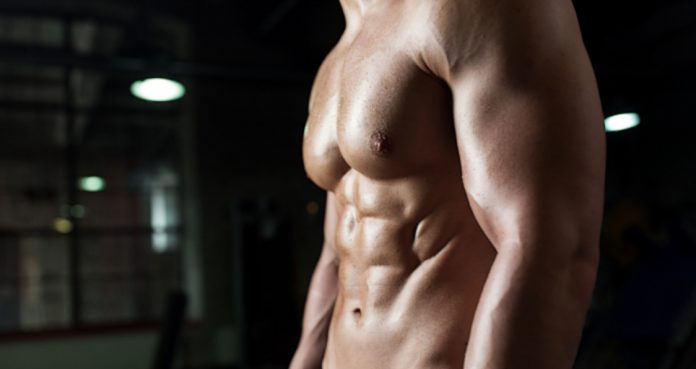
Thrash Your Abs To Perfection With This Core Training Routine
Get abs of steel with this core workout.
If we were to take a poll on what body part gets the most attention in the gym, we’d bet that the answer is likely to be the abs. It’s the first thing women notice on a man, the body part that all men wish to develop because of that fact. There’s no doubting that if you have a great looking core then you’ll be sure to get some heads turning. The core is the foundation for explosive strength and provide a great deal of help while performing resistance training. But how exactly do you get your abs to show?
Obtaining six pack abs is certainly a tall task. Where many believe that doing 300 crunches will get the job done, the reality of the situation is that abdominal exercises provide a strong base, but really have nothing to do with getting your abs to pop. The old saying goes that abs aren’t made in the gym, but made in the kitchen and truer words have never been spoken.
If you want those fabled six pack abs then you’re going to have to work just as hard on your nutrition. But that doesn’t mean you should train to obtain abs of steel. Sure, getting your body fat down will make your abs more visible, but it doesn’t mean they’ll be strong. Check out some of these awesome core exercises that are sure to give you strong and developed abs.
Obliques
The abs are more than just the rectus abdominus, most notably referred to as the six pack. They comprise other muscle groups as well, including the obliques. The obliques, inner and outer, are located on the flanks of the torso. There are numerous different ways to build up the obliques and here are a couple of exercises that can work wonders.
Dumbbell Side Bend
3 sets, 10-12 reps (30-75 lbs, left and right sides)
Hanging Knee Raises to Side
3 sets, 12 reps
The key is to not over do it with the reps and weight so that the oblique muscles don’t get considerably large. You want a strong and lean core, not a thick one.
Lower Abs
The lower part of the rectus abdominus must be worked as well to really have the total package. By working the lower portion of the core you can ensure that you’ll get that desired V shape that you crave.
Leg Raises (hanging or lying on back)
3 sets, 15 reps
Knee-Ins
3 sets, 20 reps
Upper Abs
Lastly you should target the upper portion of the abdominal muscle. Attack this portion last as it’s far simpler to engage than the obliques and the lower portion of the abs. Besides that it should already have been worked plenty by the exercises prior. These last exercises will simply add the finishing touch.
Sit Ups
3 sets, 30 reps
Crunches
3 sets, 30 reps
Remember that diet will be the main factor in making your abs pop, but these exercises will ensure that they’ll be as strong as iron.
Do you have a favorite ab routine? Let us know in the comments below and be sure to follow Generation Iron on Facebook and Twitter.

Top 12 Triceps Building Exercises
Why Developing The Triceps Is The Key For Big Arms
For so many gym goers, developing the size of their arms is often high on the list of priorities and goals. Quite rightly, they understand the importance of isolating both muscle groups of the arms through concentrated bicep and triceps movements. However, more often than not, the emphasis tends to be on building the biceps as, after all, it is the biceps that is the most apparent and “seen” muscle.
As a result, many people end up developing their biceps to a great extent but fail to do the same with the triceps. Many fail to recognize that the triceps is in fact the larger and stronger muscle group of the two and therefore has a greater capacity for growth. Yet, it is not uncommon to see the biceps receiving a great deal of attention while the triceps are neglected. By doing this, the potential to grow bigger arms is not fully taken advantage of.
Exercise Selection For Triceps Growth
There is no doubt that when it comes to exercises in general there are some which are superior for building mass than others. If we are to maximize muscle growth, it is important to distinguish between exercises that should be considered a priority and non-essential.
As mentioned, it is essential that the triceps are isolated in order to encourage growth. As a result, several the following exercises are isolation exercises, which are simply movements that require effort from one muscle group across one joint. However, there are also compound exercises listed which are exercises that place a demand on several muscle groups over a number of joints. For comprehensive triceps development, a combination of compound and isolation exercises should be performed (1).
The Best Triceps Exercises
The following exercises will have been selected based on several scientific studies. Many “EMG” studies have been completed investigating the amount of electrical activity produced during a wide range of triceps exercises. The greater the amount of activity, the more effective the triceps exercise is. In addition to the research, other factors such as exercise difficulty, progressions, regressions, adaptability and uniqueness have been considered.
This list is not supposed to be comprehensive or exclusive as there are several other useful exercises, not on the list, that can be incorporated into a muscle mass program and will assist in the muscle building process. The purpose of the list is to simply highlight a number of first-rate triceps-specific exercises.
Okay, let’s first start off with 6 compound exercises for building triceps strength and size…
Close-Grip Bench Press
By analyzing the movements required for the bench press, it will become evident that the triceps experience a great deal of stress as they powerfully contract to fully extend the arm to drive the barbell upward. Although the bench press is predominantly seen as a pectoral (chest) developing exercise, it is possible to increase the load placed on the triceps by slightly altering the technique.
By simply placing the hands closer together and narrowing the grip, the dynamic of the exercise changes. When dropping the bar to the chest, the narrower grip should keep the elbows tighter to the body which will shift the demand from the pectorals to the triceps. An EMG study investigating benching variations indicated that this change in technique did indeed increase the activation of the triceps (2).
It is recommended to place the hands approximately 8-10 inches apart on the bar – however, this is just a guide and the width required may vary from person to person. Do be aware that by going too narrow, the strain placed on the wrist does increase. If the wrists feel under a high degree of strain when benching, think about widening the grip.
Board Press
The board press is an excellent triceps developer since it limits the range of motion during the bench press by removing the bottom phase of the movement. To do this, a block is placed on the chest which restricts the distance that the bar can travel. The purpose of the board press is to focus on the lock-out portion of the exercise.
Analysis indicates that, during both close-grip and standard bench press, two-thirds of the movement involves elbow extension. As highlighted previously, it is the triceps that are responsible for driving this extension and therefore this makes the board press an effective triceps developer.
A final benefit of the board press is that due to the restricted range of motion, it is possible to load the bar with more weight in comparison to a standard bench press. By doing this, we can place an even greater degree of stress through the triceps to drive optimal changes in size and strength.
Weighted Bar Dip
The next compound exercise to be considered for triceps building is the weighted bar dip. In the dip, first suspend the body in the air by grasping the bars with both hands and hold the body upright. The goal is to maintain an upright position as the body drops down towards the floor by hinging at the elbows. Once the elbows reach approximately 90°, the triceps, amongst other muscles, powerfully contract to drive the body back up to the starting position.
As with the close-grip bench press, keep the elbows tight to the ribcage to place a maximal load on the triceps rather than the chest. Furthermore, avoid leaning forward as this will shift the focus more to the pectorals. With dips, weight can be added using a waist belt which will increase the load that the triceps are exposed to, thus enhancing muscular growth.
Weighted Bench Dip
The movements required for the bench and bar dip are identical with the only difference being the body position. With the bar dip, the body should be suspended in mid-air, whereas with the bench dip the body is grounded – typically with feet placed on an adjacent bench. This will enhance the stability of the movement, in comparison to the bar dip, and therefore this may be a slightly easier variation to perform.
As with the bar dip, it is possible to add resistance to the exercise by placing a weight on the legs and completing the given number of reps. As a consequence, the increased load and stress experienced by the triceps may lead to an enhanced muscular hypertrophy.
Triceps Dip Machine
The final dipping variation is the triceps dip machine which enhances stability even further. This potentially will allow for even more weight to be pushed than with either of the previous variations. The machine is also ideal for utilizing advanced training techniques such as forced reps, drop-sets and supersets.
Close Grip Push-Up
For a superb bodyweight triceps exercise look no further than the close grip push up. It has been found to be as, if not more, effective than the dip for triceps engagement (3).While a traditional push-up places the hands outside the line of the shoulders, the close grip push up will bring the hands in line with the shoulders. To increase the difficulty of this exercise, it is possible to place the feet on an adjacent bench or add a weight on the back.
The movement requirements of this exercise are very similar to that of the close grip bench press which means that the triceps will take the majority of the load. As with the close grip bench, look to keep the elbows tucked into the sides as the body drops to the floor to maximize triceps activation.
Now, on to 6 superb triceps isolation exercises to build definition and mass…
Overhead Dumbbell Extensions
There are 3 individual “heads” of the triceps which all contribute towards producing and stabilizing movement (4). When selecting triceps isolation exercises, it is important that movements that target each individual head of the triceps are selected in order to develop the triceps in a “rounded” manner.
Overhead extensions specifically target the long head of the triceps. Start with a dumbbell directly overhead and hinge at the elbows to drop the dumbbell directly behind the head before returning to the starting position. The use of the dumbbell will make the exercise more challenging to stabilize thus increasing the overall demand placed on the muscle group.
Often the issue with the overhead position is that it can become difficult to move solely through the elbow and prevent the elbows from flaring out. In order to minimize this, it is recommended to take a seated position and primarily concentrate on just hinging the elbow joint.
Overhead Cable Extensions
The overhead extension can also be performed with a cable and attachment (whether that be a bar, rope or handle). The benefit of using the cable is, firstly, getting into the right position to execute the exercise is very simple. Simply adopt a split stance to enhance stability, grasp the attachment with both hands behind the head and tip the trunk forward before extending the arms.
Once again, it’s essential to limit elbow flair and hinge only at the elbow. A good guide for this is to keep the elbow joint in line with the shoulder joint throughout the entirety of the exercise.
Dumbbell Single-Arm Kickbacks
Along with the dumbbell extensions, dumbbell kickbacks are a brilliant free weight triceps exercises that specifically target the long and lateral heads. It is best to perform the dumbbell kickback by focusing on one arm at a time, while using a bench to enhance stability and facilitate form.
To set-up properly, place one knee and one arm on the bench so that the body is parallel with the floor. Bring the elbow up to the ribs and “screw” it into the ribcage. From there, roll the dumbbell up to the shoulder before powerfully “kicking back” by extending the elbow until the arm reaches full extension.
Single Arm Cable Kickback
The cable kickback is an alternative to the aforementioned dumbbell kickback and can be used to enhance triceps activation. There is no need to use an attachment for this one as it is possible to simply grasp the rubber ball on the end of the cable.
In order to facilitate stability and form even further, consider placing an incline bench in front of the weight stack and place the chest on it. From that position, remember to look to lock the elbow in position while performing the movement so that the triceps are forced to perform the entire movement – not the shoulders.
Skullcrusher
The skullcrusher is undoubtedly one of, if not the most, effective triceps isolation exercise going. EMG research indicates that the skullcrusher has a massive amount of triceps activation associated with it. Because the exercise places the upper arm perpendicular with the body, a high demand is placed on both the lateral and long heads of the triceps (3).
To perform the skullcrusher, lie back on the bench and push the weight directly up so that it is directly above the shoulders. From there, lock the shoulders and focus on hinging the elbows to drop the weight towards the face before driving back up to the starting position.
One of the great things with this exercise is its versatility. A range of equipment can be used to perform it including barbells, dumbbells and cables. Each piece of equipment will slightly change the dynamic of the skullcrusher.
Cable Push Down
Last but not least is the cable push down which has been found to activate the lateral head of triceps more than the majority of other triceps exercises (3). This is probably one of the simplest triceps exercises in existence, however, more often than not, it’s performed incorrectly.
Ensure that the elbows are pinned in tight to the ribcage and that movement around the shoulder is minimized before driving the bar down to the hips. During the push down phase, do not let the elbows drift away from the ribcage and really focus on squeezing the triceps at the point of peak contraction.
Final Word
If the goal is to build the guns, it’s time to step away from the comforts of the bicep curl and start paying more attention to triceps development. For those who are serious about developing arm size, select a number of the above exercises and perform them 2-3 x per week as once per week is simply not enough for optimizing muscle growth (5). Combine this will proper rest, recovery and nutrition and the arms will be bursting from the sleeves in no time.
For more news and updates, follow Generation Iron on Facebook, Twitter, and Instagram.
Header image courtesy of Envato Elements
References:1- Asian J Sports Med. 2015 Jun; 6(2): e24057. Published online 2015 Jun 22. PMCID: PMC4592763. PMID: 26446291
2- Saeterbakken, Atle Hole; Mo, Dag-André; Scott, Suzanne; Andersen, Vidar (June 22, 2017). “The Effects of Bench Press Variations in Competitive Athletes on Muscle Activity and Performance”. Journal of Human Kinetics. 57: 61–71. doi:10.1515/hukin-2017-0047. ISSN 1640-5544. PMC PMCPMC5504579. PMID 28713459.
3- Boehler, Brittany (May 4, 2011). Electromyographic analysis of the triceps brachii muscle during a variety of triceps exercises
4- J Clin Med Res. 2018 Apr; 10(4): 290–293. Published online 2018 Feb 18. PMCID: PMC5827912. PMID: 29511416
5- J Strength Cond Res. 2015 Jul;29(7):1821-9. doi: 10.1519/JSC.0000000000000970.
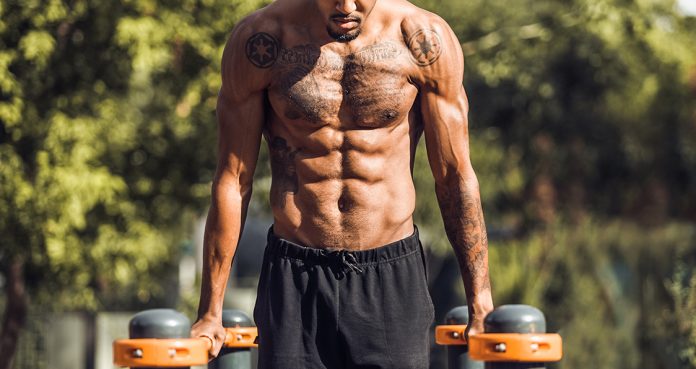
The Ultimate Gauntlet To Test If You Are A True Master Of Fitness
Don’t get your feelings hurt…
Warning: If you’re a generally fit guy you shouldn’t read this. This is not for the “generally fit” – this is for the guy who cares more about results than how he looks in the mirror. Dare we say this might be better suited for the guy who’s not fit at all. Sure he’s not in great physical shape but he doesn’t have an ego and may actually learn from where he falls short.
The problem is with middle men, and that’s probably most of you guys, is that the ego puts in some work but not enough to take you where you really want to go. To the next level of true physical mastery. Well you can fool your girlfriend with your half -ass six pack but you can’t fool us. We’ve got a gauntlet that is meant to be a test of who is truly a master of strength and fitness. Looking to go through the gauntlet and test your abilities? Here’s the 4 challenge you’ll need to complete.
Meter Murder
The first step in our fitness gauntlet might make you curse us… but you’re going to thank us in the end for this one. You’re going to need a stopwatch and a track. Set your stopwatch to 1 min and then run 10 meters, rest for the remaining time. Do this again but this time run for 20 meters and then rest for the remaining time. Keep doing this until you can no longer beat the clock or until you get up to 200 meters. Good luck.
Death by Burpee
Step two of the fitness gauntlet. As much as we love to poke fun at the crossfit world there’s one thing that they’ve incorporated right, and that’s the burpee. The burpee is pretty much a pushup that ends with a vertical jump. Quickly go from standing to a pushup position, do one rep and then stand up, as soon as you get to your feet – jump vertically as high as you can, when you land repeat.
Try to do 100 of these in the fastest time possible. Many of you won’t be able to get to a hundred, that’s okay. As soon as you do get there the next step is to go for time. If you can beat your previous time each week then you’re doing it right.
One Minute Sprint
Now it’s time for step three of the fitness gauntlet. One minute doesn’t sound like a longtime but trust us, when you’re giving it everything that you’ve got those 60 seconds feel like hell. Get on a bike machine and try to lose as many calories as possible within the time limit. 45 is the average so if you’re higher then you’re taking care of business if not, you’re slacking.
2,000 Meter Rowing Machine
An oldie but a goodie, the rowing machine is probably one of the most complete exercise machines out there. The ultimate in man versus machine, this workout is bitter in tasted but sweet in victory. Set the rowing machine to 2,000 meters go as hard as you can until you get there. The goal is under 7 minutes but that just a guideline, don’t be discouraged if you don’t get there the first time, the rower is a wake up call for most weekend warriors.
So now that we’ve posed the challenge to you, what are you going to do with it? Try it out and let us know.
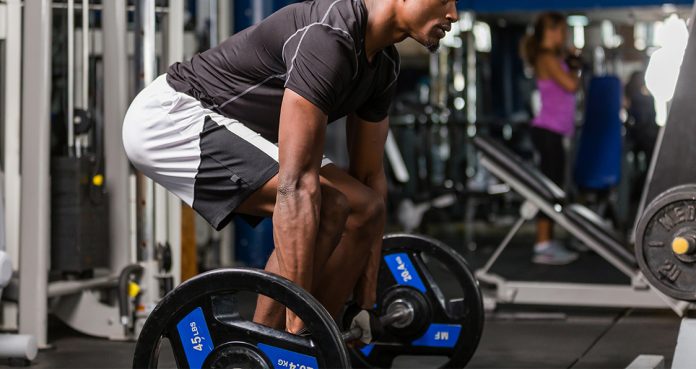
Reasons Why Your Workout Program Sucks
Why Your Training Program Doesn’t Work
Ask around in your gym if people are satisfied with their workout program and results, and chances are most of them will tell you they can’t seem to make any gains. Many people follow the same vanilla workout program which isn’t any good.
Some people also underestimate the value of the right training program and are happy wasting their time following unscientific workout routines. If you don’t see any positive changes in your physique, you have come to the right place.
Doesn’t Follow A Balanced Approach
For a training program to be effective, it should have the right balance of different training principles. Your workout should maintain a balance between isolation and compound lifts, and volume and intensity. Depriving your body of any aspect can lead to a muscular imbalance.
Some people follow a workout which only has free weight exercises or doesn’t have any cardio included. In a balanced workout program, we look at our body with a broader perspective and work on the muscular, cardiovascular and central nervous system conditioning.
The Training Program Isn’t Personalized
Most people when they get a gym membership either start a generic training program or a program which isn’t suited for their level or goals. Following a generic workout program is like going to college and sitting for random classes which aren’t of your field.
While you might learn some things out of those classes, they will not help you in passing in your own subjects. If you want to succeed in the gym, you need to build your own training routine as per your goals.
If you can’t design your own training program, get the help of a professional. You also need to plan your training around your life. If you have an important life event coming, you might have to change your workout program to accommodate for the missed sessions or the extra calories you might consume. Keep all the variables in mind while selecting a training program.
No Scope For Adjustment With Progress
Many people follow the same program forever. They make no changes when they see the development or when there is no progress. After a period of time, your body gets used to your workouts and you need to make modifications to keep the muscles growing.
If you’re a beginner, you will need to upgrade your training program after 12-20 weeks of following the starter program. The fact that you need to constantly adjust your training program as per your progress stays true for intermediate and pro lifters alike.
Showing loyalty to the beginner’s program will keep you glued to the level. Monogamy shouldn’t be applied to training programs. You should always be on the lookout to upgrade your workout routine and take it to the next level.
Does Not Include Any Advanced Training Techniques
Using advanced training techniques are one of the key aspects of showing constant progress. You need to perform new exercises and techniques to constantly shock your muscles into growing.
Advanced training techniques like supersets, drop sets, intraset stretching, etc. should be a part of your workouts. Pull one of the techniques out of your exercise arsenal in every workout to ignite new muscle growth.
Header image courtesy of Envato Elements
How often do you change your workout program?
Let us know in the comments below. Also, be sure to follow Generation Iron on Facebook and Twitter.
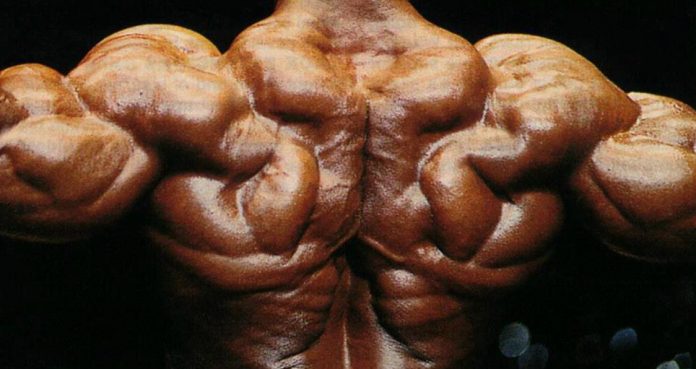
This Is How The P.H.U.L. Routine Will Give You Max Gains
Size and strength.
Bodybuilding is a strictly aesthetic venture. There are some people out there that believe having an aesthetic physique automatically means you have a powerful physique. Unfortunately that just isn’t the case. The reality of bodybuilding training, specifically if you’re just trying to get shredded, is that it has less to do with strength and power and more to do with diet, training frequency, and hypertrophy.
As you progress in your bodybuilding journey however there’s no doubt that with the size and shred you’re going to want to build power as well. Powerbuilding is the best way to go so that you not only look like a comic book superhero, but can perform like one in the gym as well. Size without strength is almost meaningless.
Imagine the Hulk having all that massive muscle without having the ability to lift a car over his head. That comic would’ve become old really fast. The same can be said of bodybuilders. You don’t want to look like the Hulk but have trouble lifting your own body weight. It’s just ludicrous. That’s why the best approach for building both power and muscle mass is none other than the PHUL training system.
PHUL, an abbreviation for power hypertrophy upper lower, is a system that promotes strength gains as well as muscle gain. The system is designed to hit each muscle group twice within the week focusing on both the upper and lower body. Compound movements are the main focus of this training program to ensure strength gains as well as improve your proficiency in the three major lifts the bench, the squat, and the deadlift. Isolation movements are also apart of the program, but the compound movements are going to improve your strength. Two days out of the four day program are focused purely on strength while the other two are focused on hypertrophy.
You’ll have two days of training with one off day in between then two more days of training with two days of rest before starting over again. What exactly should a PHUL training program look like? The GI Team has got you covered.
Day 1: Upper Power
Barbell Bench Press
3-4 sets, 3-5 reps
Incline Dumbbell Bench Press
3-4 sets, 6-10 reps
Bent Over Row
3-4 sets, 3-5 reps
Lat Pull Down
3-4 sets, 6-10 reps
Overhead Press
2-3 sets, 5-8 reps
Barbell Curl
2-3 sets, 6-10 reps
Skullcrusher
2-3 sets, 6-10 reps
Day 2: Lower Power
Squat
3-4 sets, 3-5 reps
Deadlift
3-4 sets, 3-5 reps
Leg Press
3-5 sets, 10-15 reps
Leg Curl
3-4 sets, 6-10 reps
Calf Exercise
4 sets, 6-10 reps
Day 4: Upper Hypertrophy
Incline Barbell Bench Press
3-4 sets, 8-12 reps
Flat Bench Dumbbell Flye
3-4 sets, 8-12 reps
Seated Cable Row
3-4 sets, 8-12 reps
One Arm Dumbbell Row
3-4 sets, 8-12 reps
Dumbbell Lateral Raise
3-4 sets, 8-12 reps
Seated Incline Dumbbell Curl
3-4 sets, 8-12 reps
Cable Tricep Extension
3-4 sets, 8-12 reps
Day 5: Lower Hypertrophy
Front Squat
3-4 sets, 8-12 reps
Barbell Lunge
3-4 sets, 8-12 reps
Leg Extension
3-4 sets, 10-15 reps
Leg Curl
3-4 sets, 10-15 reps
Seated Calf Raise
3-4 sets, 8-12 reps
Calf Press
3-4 sets, 8-12 reps
Is the PHUL system apart of your training program? Let us know in the comments below and be sure to follow Generation Iron on Facebook and Twitter.
The GI Team is here to provide top news and original content for the new generation. The generation of bodybuilders who are pushing the sport to bigger and better places. Join The Movement. Become a part of Generation Iron!
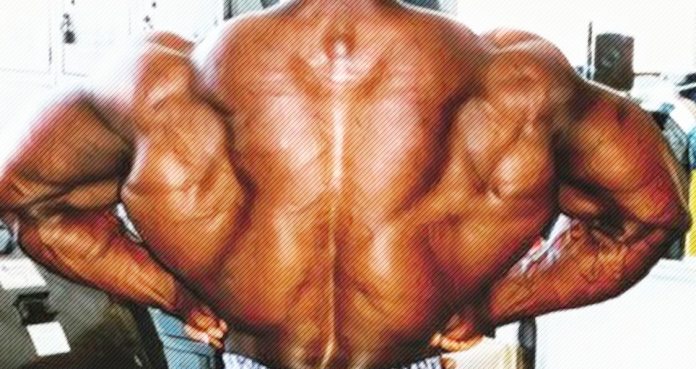
3 Exercises That Will Get You Wide-Ass Lats
Working the Opposite.
There’s a real science to bodybuilding that the average person will never understand. There’s more to molding and shaping a form you can be proud of by just simply doing a few sets of curls or hitting the bench. It’s a process that requires a person to know how the human body works – in particular, and this is most important, how their body works. As bodybuilder you come to understand that the only person who’s going to know what’s best for your development is you.
What’s also true is that sometimes building up one part of the body can ultimately improve another muscle group as well. There are plenty of guys who focus all their attention on one muscle group to the point that other parts of their body is under developed. The key to making an aesthetic physical form is by not only working out the muscle group that you wish to improve, but the antagonizing muscles as well.
What’s an antagonizing muscle? Well, it’s the opposite muscle group to the one that you may be working on, the easiest example being the triceps versus the biceps. Shaping one or the other is great, but shaping the whole thing brings the package together.
In terms of building up muscle groups there’s no doubt that the chest is one of the biggest body parts that are attacked by men. Having a strong and developed chest is the dream of most any man out there and it’s the reason so many beginners target them frequently. But if you desire a great chest then you’re going to have to work your antagonizing muscles as well.
The lats can make your form look extremely impressive if you give them the proper attention. When you have wide lats it’s hard to be ignored and it gives your physique an even more domineering appearance. Check out some of these exercises to get some massive lats to compliment the rest of your form.
Seated Cable Row
A great exercise that holds a number of benefits, the seated cable row is an exercise that give you some great development. The movement of this exercise allows for improvement in the upper, middle, lower, and outer parts of the back. It’s definitely an exercise that should be apart of your back day routine.
Lat Pulldowns
This is a great exercise to isolate the lat muscles for some very specific development. The lat pull down is very similar to the wide grip pull up but the fundamental difference is that the body remains stationary. This allows for the user to emphasize the lats specifically.
Wide Grip Pull Ups
This is often compared to the lat pull down, seeing as how they both work the outer lat muscles, but there’s a major difference – where the lat pull down is stationary and focuses solely on the lat muscle, the wide grip pull ups not only improve your outer lat development, but your overall strength as well. It’s great for giving you functional strength along with working your back.
What’s your favorite back exercise? Let us know in the comments below and be sure to follow Generation Iron on Facebook and Twitter.
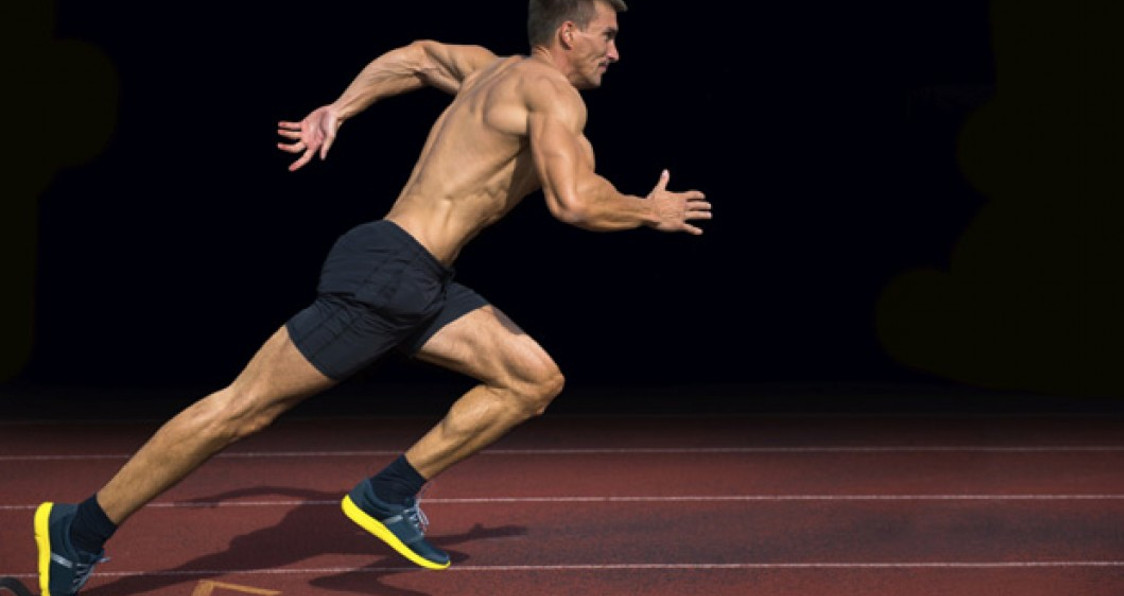
Best Cardio For Bodybuilders Without Losing Muscle
Don’t fear the sprint.
For bodybuilders, the very utterance of the word cardio seems to send chills down their spines. Many of those who look to build muscle seem to equate cardio with muscle destruction. They automatically assume that the inclusion of any form of cardiovascular training into their routine will mean losing all of their hard earned muscle. It’s an ideology that has been refuted, yet it still seems to find its way into the culture.
Cardio for an ectomorph who has trouble with keeping on muscle may be something to worry about. For most others who can gain either fat or muscle easily, those with slower metabolisms, cardio training can be their best friend.
People looking to shred their bodies but refuse to utilize cardio are essentially handicapping themselves and ensuring that they never get the defined and aesthetic form that they constantly seek. It burns away excess fat and jump starts your metabolism and, if you have the right diet plan, won’t affect your muscle gains at all.
So now that it’s been established that cardio isn’t evil, the question becomes a bit more intriguing. If cardio is a must for getting shredded and ridding your body of excess body fat, then which exercises should be in your program? We compiled a list of muscle friendly cardio exercises that will have you looking more shredded than ever.
Cycling
This is perhaps one of the more underrated cardiovascular exercises that many bodybuilders never consider. Though walking on the incline treadmill can be a great source of cardio, studies have found that cycling or bike riding can prove to be more impressive for a couple of reasons.
For one, it’s just a more intensive and explosive exercise than walking. Second is that the hip flexion are engaged in the motion which can improve your squatting ability as well as increase your chances of hypertrophy when combined with resistance training.
Sprinting
Another great exercise that can improve your chances of hypertrophy, sprinting is perhaps the biggest gem of cardio based exercises. Though many bodybuilders, particularly larger individuals, may find jogging to be a bit easier to bear, sprinting can actually improve muscle growth.
Like mentioned before with cycling, the hip flexion are engaged while sprinting. The exercise is a multi-joint movement that stimulates muscle activation and can improve leg development as it that same activation simulates the tension of squatting or using the leg press.
Rowing Machine
We’ve spoken about two cardio exercises that work the lower body extensively, but what about the upper body? Well, it seems that the rowing machine can be a great tool for athletes looking to build definition in their upper bodies. When paired with resistance training, the rowing can prove to be very beneficial for upper body development.
The rowing machine works your back and core during the pulling motion and even works your legs greatly during the pushing portion of of the movement. You get the benefit of muscle development while performing cardio at the same time.
Which cardio exercises do you have in your routine? Let us know in the comments below and be sure to follow Generation Iron on Facebook and Twitter.
